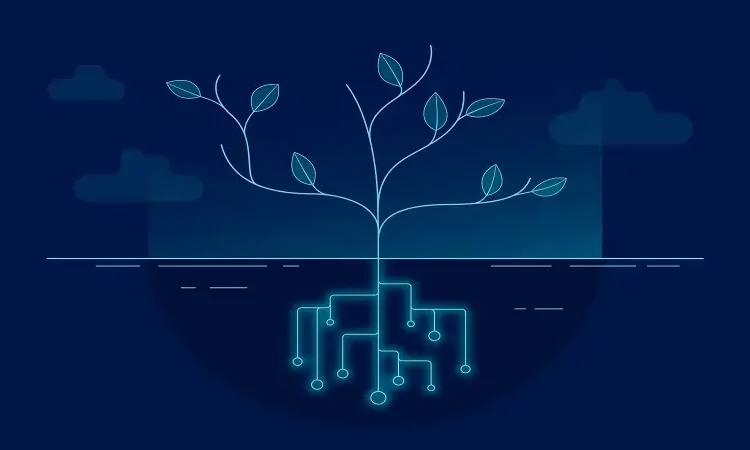In the modern technological landscape, the Internet of Things (IoT) and cloud computing are two of the most transformative forces. Their synergy is reshaping industries, optimizing operations, and driving unprecedented growth. As IoT devices proliferate, generating massive volumes of data, cloud computing provides the scalability and flexibility needed to manage and analyze this data. This article explores the journey from the humble beginnings of IoT deployment to the expansive capabilities enabled by cloud scalability, offering insights into orchestrating this complex yet harmonious symphony.
The Seedling Stage: IoT’s Initial Growth
The concept of IoT, where everyday objects are embedded with sensors and connected to the internet, began to take root in the early 2000s. Initially, IoT devices were relatively simple, often used in niche applications like home automation or industrial monitoring. These early implementations were limited in scale and functionality, primarily due to constraints in connectivity, data storage, and processing power.
During this phase, businesses and developers faced several challenges:
- Connectivity Issues: Early IoT devices often struggled with inconsistent network coverage and bandwidth limitations. The advent of more robust wireless technologies, such as 4G and 5G, began to address these issues, offering greater reliability and speed.
- Data Management: With limited processing capabilities, early IoT devices could only handle small amounts of data locally. The need for more advanced data management solutions became evident as the volume and complexity of data increased.
- Integration Difficulties: Connecting disparate IoT devices and systems required bespoke solutions, often leading to fragmented ecosystems that were difficult to manage and scale.
The Growth Spurt: Expanding IoT Applications
As technology advanced, so did the capabilities of IoT devices. Enhanced sensors, improved connectivity, and more powerful processing units enabled a wider range of applications. From smart homes and wearable technology to smart cities and industrial automation, IoT began to expand its footprint significantly.
Key developments during this growth spurt included:
- Enhanced Connectivity: The rollout of 5G networks provided a substantial boost to IoT, offering higher speeds, lower latency, and the ability to connect a greater number of devices simultaneously. This connectivity facilitated real-time data exchange and more sophisticated applications.
- Edge Computing: To address latency issues and reduce the strain on centralized servers, edge computing emerged as a solution. By processing data closer to the source, edge computing allowed for faster response times and reduced the need for constant cloud communication.
- Advanced Analytics: As IoT devices generated more data, the need for advanced analytics became apparent. Machine learning and artificial intelligence began to play a crucial role in extracting actionable insights from the vast amounts of data collected.
The Sequoia Stage: Cloud Scalability and Integration
With the proliferation of IoT devices and the exponential growth in data, cloud computing became an indispensable partner. Cloud platforms offer the scalability and flexibility necessary to handle the massive data volumes generated by IoT. The integration of IoT and cloud computing represents the maturation of the technology, allowing for sophisticated, large-scale applications.
- Scalability: Cloud computing provides the ability to scale resources up or down based on demand. This is crucial for IoT deployments, where the number of connected devices and the volume of data can fluctuate. Cloud platforms can accommodate these changes seamlessly, ensuring that businesses can handle peak loads without investing in costly infrastructure.
- Storage and Processing Power: The cloud offers virtually unlimited storage and processing capabilities. This is essential for managing the vast amounts of data generated by IoT devices. Cloud services like Amazon Web Services (AWS), Microsoft Azure, and Google Cloud Platform provide robust data storage solutions, as well as powerful computing resources for data analysis.
- Security and Compliance: As IoT devices collect sensitive information, security becomes a paramount concern. Cloud providers invest heavily in security measures, including encryption, access controls, and regular audits, to protect data. Additionally, cloud platforms often offer compliance with industry regulations, helping businesses meet legal and regulatory requirements.
- Integration and Interoperability: The cloud facilitates the integration of diverse IoT systems and devices. With APIs and middleware solutions, businesses can create cohesive ecosystems that streamline operations and enhance efficiency. Cloud-based platforms also enable seamless updates and maintenance, ensuring that IoT systems remain up-to-date and functional.
Orchestrating the Symphony: Best Practices for IoT and Cloud Integration
Successfully managing the integration of IoT and cloud computing requires careful planning and execution. Here are some best practices for orchestrating this symphony of growth and scalability:
- Design for Scalability: When designing IoT solutions, consider how the system will scale over time. Choose cloud platforms that offer flexible and scalable infrastructure to accommodate future growth. Ensure that the architecture can handle increasing numbers of devices and data without compromising performance.
- Prioritize Security: Implement robust security measures to protect IoT data and infrastructure. Use encryption, secure access protocols, and regular security updates to safeguard against potential threats. Consider using cloud services that offer built-in security features and compliance certifications.
- Leverage Edge Computing: To reduce latency and improve performance, incorporate edge computing where appropriate. Process data locally when possible and use the cloud for more intensive tasks like long-term storage and complex analysis.
- Optimize Data Management: Implement efficient data management practices to handle the large volumes of data generated by IoT devices. Use cloud-based data lakes or warehouses to store and analyze data, and leverage advanced analytics tools to derive actionable insights.
- Focus on Interoperability: Ensure that IoT devices and systems can communicate effectively with each other. Use standardized protocols and APIs to facilitate integration and avoid vendor lock-in. Cloud platforms often provide tools and services to support interoperability.
- Monitor and Maintain: Regularly monitor the performance of IoT systems and cloud infrastructure. Use monitoring tools to track metrics, identify potential issues, and optimize performance. Conduct routine maintenance to ensure that systems remain reliable and efficient.
The Future of IoT and Cloud Computing
As IoT and cloud computing continue to evolve, several trends are likely to shape their future:
- Artificial Intelligence and Machine Learning: The integration of AI and ML will further enhance the capabilities of IoT systems. Predictive analytics, autonomous decision-making, and advanced pattern recognition will become more prevalent, driving new innovations and applications.
- 5G and Beyond: The continued rollout of 5G and the development of future wireless technologies will expand the possibilities for IoT. Enhanced connectivity will enable more sophisticated applications, including those requiring ultra-low latency and high data throughput.
- Edge-to-Cloud Integration: The seamless integration of edge and cloud computing will become increasingly important. Hybrid architectures that combine edge and cloud resources will provide greater flexibility and efficiency, catering to diverse use cases and requirements.
- Sustainability and Efficiency: As the environmental impact of technology becomes a growing concern, there will be a focus on developing sustainable and energy-efficient IoT and cloud solutions. Innovations in green technology and eco-friendly practices will play a key role in shaping the future.
Conclusion
The journey from the sprout of IoT to the sequoia of cloud scalability is a testament to the transformative power of technology. By orchestrating the integration of IoT and cloud computing, businesses can harness the full potential of these technologies, driving growth, innovation, and efficiency. As we look to the future, the symphony of IoT and cloud computing will continue to evolve, presenting new opportunities and challenges for those who seek to leverage their combined power. See More




